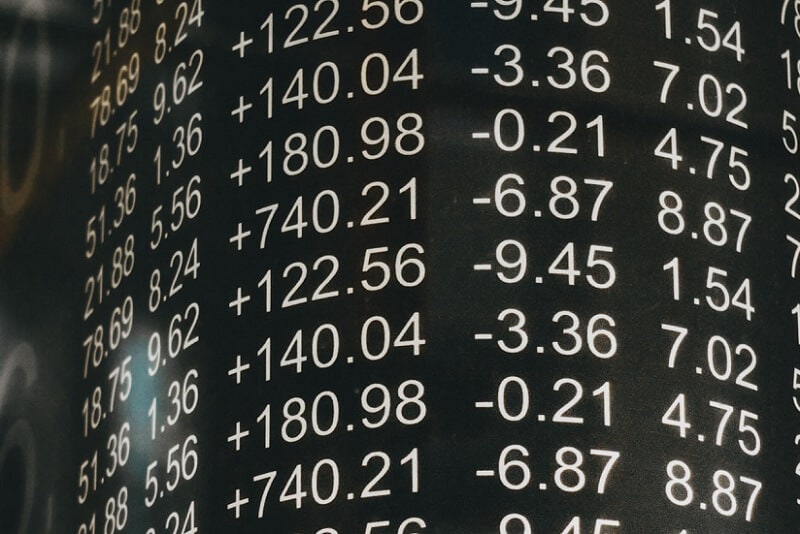
Lack of knowledge is the biggest reason behind unsuccessful trades. Searching the internet can give you some clues but also a poor education. The consequence is that you’ll be among 90% of losers.
By Guy Avtalyon
Most traders fail when trading stocks, why is that? The stats are cruel. Only 10% of all traders make money permanently. That means the rest of the 90% of traders fail to make significant success. To break it down and be more precise, 80% suffer losses, 10% give up over time and only 10% are profiting permanently.
How is that possible, why do most traders fail when trading stocks? We have to find out the reasons behind because everyone wants to be in that 10% of successful traders. It doesn’t depend on gender, age, nationality, it simply depends on how much you are resolute to dedicate your time and effort to achieve success and make money on the stock market.
Since the stats show that most traders fail when trading stocks, why do the majority simply copy losing traders? Why don’t they do just the opposite? The information is all around us thanks to the internet, but how can some inexperienced trader know what to use, what to do?
So, let’s start and explain why most traders fail to make money on the stock market. Also, we’ll give you some hints on how to avoid unsuccessful trades.
Why most traders fail when trading stocks?
Because they neglect the rules.
If you want to become a successful trader you’ll need knowledge, experience, and hard work. Only when you gain all these three ingredients you may count on success eventually. You have to forget the luck factor. Trading the stock market isn’t a lottery game. You can’t just pick a ticket and pray. Trading stocks is a serious job so you’ll need to study a lot and acquire knowledge. When you acquire knowledge, you can start developing experience. You’ll walk a thorny path but if you put some effort you’ll reach your goals and finally enter in that 10% of successful traders.
But you’ll need time. Some surveys show that you’ll need form three to five years of learning to obtain experience. You have to go out the whole way, there are no shortcuts. The good news is that trading stocks aren’t rocket science so don’t be afraid of it, it isn’t complicated. Keep in mind that most successful traders like to look as they have the key to a great secret. They are acting like they revealed the Philosopher’s Stone.
Nothing is that complex and mysterious on the stock market but some traders are frightened by the attitude of successful traders. Remember, knowledge and experience are something that they obtained over time. They aren’t born with that.
Of course, you’ll find numerous agencies offering instant solutions with no knowledge and experience required. Just don’t trust and avoid them. the only thing they want is your money.
Most traders fail when trading stocks because of lack of knowledge
This is the biggest reason behind the unsuccessful trades. Where do you try to learn more about trading stocks? You’ll need to learn from the respectable investors, they wrote so many books. Searching the internet can give you some clues but if you rely on that only it is more likely you’ll end up getting a poor education. The consequence is that you’ll still be among 90% of losers.
Are you impressed with graphs? How much do you really understand what you are looking at? Do you have a trading plan? What do you know about risk or money management?
Successful traders know how to develop an effective trading plan. The fact that you are buying a stock and selling it, doesn’t mean you are a trader.
Okay, to put more pain into your life we have to ask you. Let’s assume you have a trading strategy which means you are not that much inexperienced. Do you know why your trading strategy stopped working? How do you know it stops working?
What is an outstanding strategy for trading stocks?
Most traders fail when trading stocks because of different reasons but the most common reason is that they are constantly seeking an outstanding strategy. So, what will happen when they find it? Will they use that one single strategy during the whole trading career? What a dangerous mistake! When trading strategy stops working you have to adjust it or replace it. There is no other way. But first, you have to understand why your strategy doesn’t work anymore.
As being a trader you know that the stock market is changing. One single strategy cannot be suitable for all market conditions. The trading strategy must be in sync with these market changes. It has to be adjusted for the new condition in the market. If your strategy stops working that means it is unable to meet the current market.
The good news is that you could adjust your strategy and reduce failure.
How to recognize that your strategy doesn’t work anymore?
We are pretty sure you have a great strategy that passed all backtesting. Also, we believe you made money with it. But what if your strategy suddenly doesn’t work and you have a sizable drawdown? Will you get panicked? Well, don’t! That is part of trading. Sometimes you’ll even not be able to notice that but sometimes it will cause great losses. And you’ll start to examine your trading strategy. How will you know that your strategy doesn’t work anymore?
The problem is that you can’t know if it is temporary or permanent. Some experts suggest setting stop-loss on the whole strategy level. So, when your strategy nails that level, you’ll stop trading it. If your strategy starts working again be patient and wait until you see that the continued strength isn’t temporary. Also, there are some tests to help you to assure that your strategy is still working. For example, in-sample and out-of-sample testing can be very useful to check the validity of your strategy. Check it by the training tools firstly, and then confirm on the validation set.
The idea behind this is that real market performance will continue on both sets. Random market noise will not be registered. Use walk forward analysis to perform differently in and out of sample tests. Forward testing is also a good method to examine how your strategy will perform going forward.
Most traders fail when trading stocks because they think their strategy isn’t working anymore and stop to use it.
Poor risk management cause failure trades
You might have a winning trading strategy but if your risk management is poor your trade will fail.
Risk management assists to cut down losses. It will protect your account from losing the money. If you know how to manage the risks, you’ll make money. Most traders fail when trading stocks because of overlooked requirements for successful trading. One bad trade without risk management strategy can end up in great loss.
How to develop the best system to control the risks of stock trading?
First of all, you have to plan your trading. Stop-loss and take-profit points are keys to planning. That means you’ll need to know what price you are prepared to pay and at what price you are ready to sell. If the return is fairly high, you can execute the trade.
Even with the best trading strategy in the world, without proper risk management, you’ll end up with poor trades
Trading with poor risk management could reveal why most traders fail when trading the stock market. If you want to stay in this game, the best advice you can get is to learn everything possible on risk management.
Most traders fail due to unrealistic expectations
Trading stocks naturally include some level of risk. But it is completely understandable why so many traders are taking high risks. A few books that you had read or one or two webinars are not guarantees for winning trades. There are no instant solutions in trading stocks. Also, if you think that using some complex strategy will bring you more profits we have to say you couldn’t be more wrong.
Unfortunately, traders are still losing their hard-earned money thanks to unrealistic expectations.
We already said that knowledge is extremely important in trading but proper implementation of it is more important. When you hear that someone had great trade during the bull market, for example, you have to know that it isn’t always thanks to great knowledge. It is easy to trade bull markets since they can cover the mistakes caused by a lack of knowledge. But what will you do when the bear market occurs?
To define yourself as a trader you must have at least two or three years of continuous success. Don’t ask for easy and easy solutions. That is a blind way. You’ll be among 90% of unsuccessful traders.
Trading is a professional career and as being that it takes years of dedication and work to be good at it. While learning you can do that from your mistakes but also, from other traders’ experience. That is the beauty of learning to trade. With the decreasing number of trading errors, you are closer and closer to become a successful trader. Most traders fail when trading because they avoid learning. And to be honest, that is the easiest part. The troublesome part is understanding your own psychology. That will determine how you will enter the stock market.



















 Image source
Image source